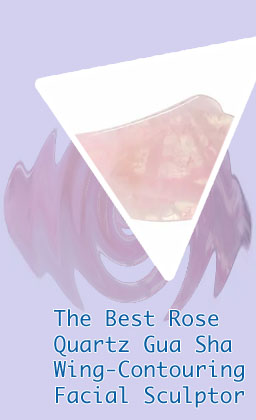Real gua sha

Gua sha has gained popularity in recent years as a traditional Chinese therapy for promoting blood circulation and releasing muscle tension. However, there is often confusion about what constitutes a real gua sha practice. In order to provide clarity on this topic, the following three articles offer insights and guidance on how to distinguish authentic gua sha techniques from imitations or misinterpretations.
The Ancient Art of Gua Sha: Understanding the Traditional Practice
Gua Sha, a traditional Chinese healing technique, has gained popularity in recent years for its numerous health benefits. In the book "The Ancient Art of Gua Sha: Understanding the Traditional Practice," readers are provided with a comprehensive guide to the history, techniques, and benefits of this ancient practice.
One of the key takeaways from the book is the understanding of how Gua Sha works to promote circulation, reduce inflammation, and improve overall health. By using a scraping tool to apply pressure to the skin, Gua Sha helps to release tension, toxins, and stagnant energy from the body. This results in improved blood flow, reduced pain, and a greater sense of well-being.
The book also delves into the various tools and techniques used in Gua Sha, offering step-by-step instructions on how to perform a Gua Sha session at home. Readers will learn about different types of scraping tools, such as jade or rose quartz, and how to use them effectively on different parts of the body.
Overall, "The Ancient Art of Gua Sha: Understanding the Traditional Practice" is a valuable resource for anyone interested in learning more about this ancient healing practice. Whether you are new to Gua Sha or a seasoned practitioner, this book provides a wealth of information to help you incorporate
Identifying Fake Gua Sha Tools: Tips for Spotting Counterfeits
Gua Sha tools have gained popularity in recent years for their purported health and beauty benefits. However, with the rise in demand for these tools, there has also been an increase in the production of counterfeit products. It is important for consumers to be able to identify fake Gua Sha tools in order to ensure they are purchasing a safe and effective product.
One tip for spotting counterfeit Gua Sha tools is to look for inconsistencies in the material and craftsmanship. Authentic Gua Sha tools are typically made from high-quality materials such as jade or rose quartz, and are hand-crafted with care. Counterfeit products may be made from cheaper materials and have visible imperfections in their design.
Another tip is to purchase Gua Sha tools from reputable sellers. Authentic Gua Sha tools are often sold by licensed practitioners or reputable retailers who specialize in traditional Chinese medicine tools. Avoid purchasing Gua Sha tools from unknown sellers or online marketplaces where counterfeit products are more common.
One practical use case of identifying fake Gua Sha tools is when a consumer purchased a Gua Sha tool online and noticed that it felt lighter and had a plastic-like texture, indicating that it may be a counterfeit product. The consumer contacted the seller and was able to return the fake product and receive a refund. By being aware of
Real Gua Sha vs. Modern Adaptations: Exploring the Key Differences
Gua Sha, an ancient Chinese healing technique, has gained popularity in the modern wellness world. However, there are key differences between traditional Gua Sha practices and modern adaptations that are important to understand.
One of the main differences between real Gua Sha and modern adaptations is the materials used. Traditional Gua Sha tools are typically made from natural materials such as jade or rose quartz, which are believed to have healing properties. In contrast, modern adaptations often use materials like plastic or stainless steel, which may not offer the same benefits.
Another difference is the technique itself. Real Gua Sha involves using a scraping motion on the skin to promote circulation and release tension. Modern adaptations may focus more on gentle stroking or rolling motions, which may not be as effective in providing the same therapeutic benefits.
Additionally, traditional Gua Sha is often performed by trained practitioners who understand the meridian system and how to target specific areas of the body for healing. Modern adaptations may lack this level of expertise, leading to less effective results.
In conclusion, while modern adaptations of Gua Sha can still offer some benefits, there are key differences that set them apart from traditional practices. For those looking to experience the full therapeutic effects of Gua Sha, it may be worth seeking out a trained practitioner who uses

|

